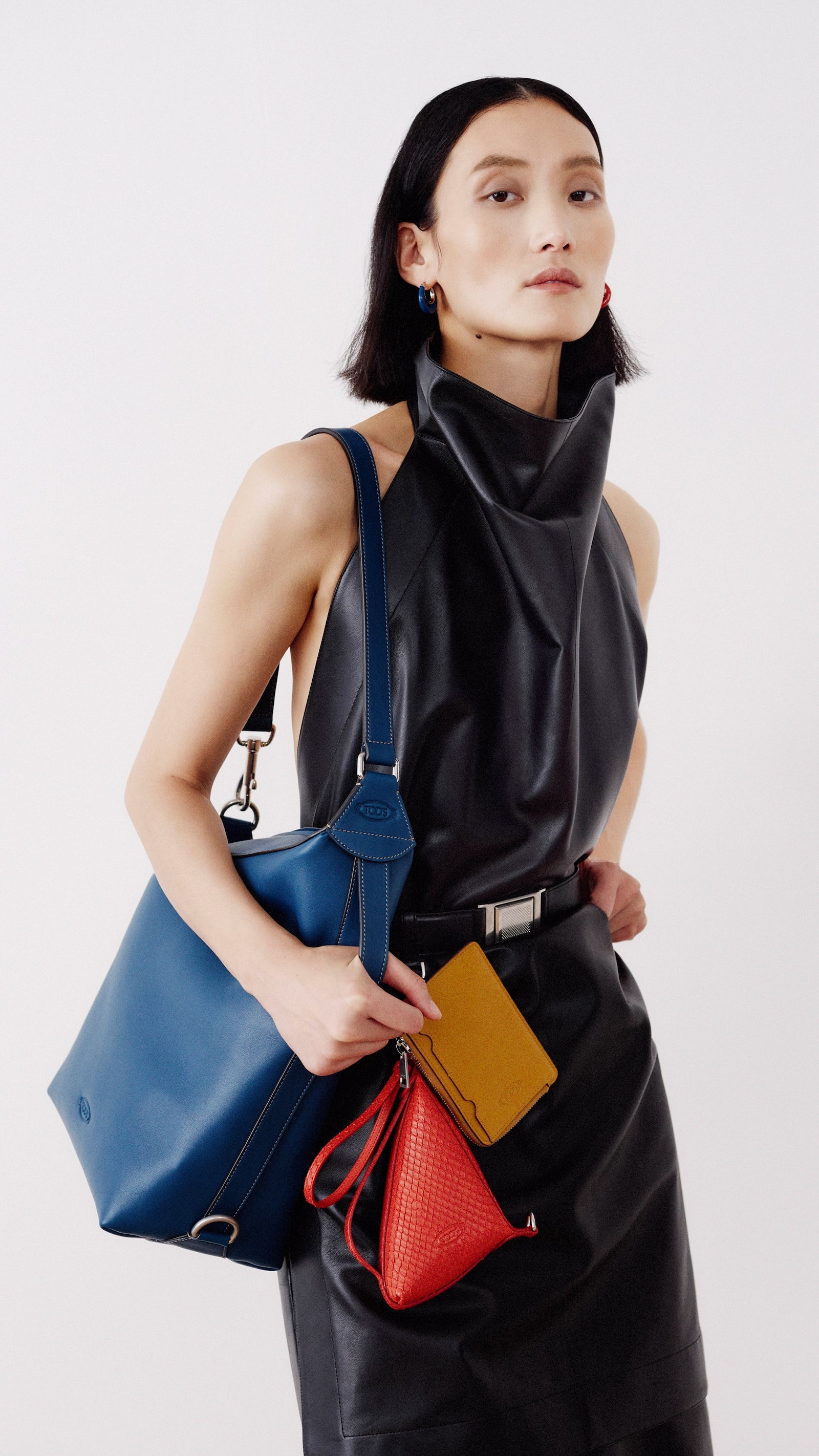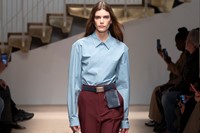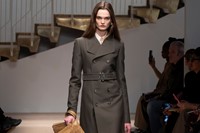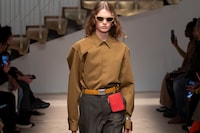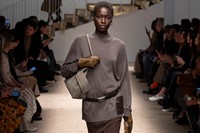Matteo Tamburini started designing his Autumn/Winter 2025 Tod’s collection not with a woman in mind, nor a garment or a fabric but a place: the Padiglione d’Arte Contemporanea or PAC, a modern art museum in the heart of Milan. It’s actually a venue Tod’s used as its show space for years, but had never really talked about. “The story of the place is so fascinating,” said Tamburini, the day before his show. “Obviously I like to go there for cultural reasons, but it was built in the 50s, to represent postwar rationalism, but in the 90s it was destroyed by the Mafia. So, the story of the place, there’s this idea of resilience, rebuilding from what you’ve been.”
A judicious googling yielded fascinating results. It was on July 27, 1993, that a grey Fiat Uno filled with explosives was detonated outside, the work of Cosa Nostra – the Sicilian Mafia – and destroyed the building. It was an attack on Italian culture, accompanied by other bombings targeting institutions including the Uffizi museum in Florence. That, of course, wasn’t reflected in Tod’s clothes directly. But Tamburini said he was thinking about a modern resilience. “Keeping an eye on the past, and at the same time trying to build something new.”
That resonates with his Tod’s, now three shows in, where Tamburini has been working with the brand’s hallmarks – chiefly, its excellence in leather craft and a sense of Italian heritage – and crafting them into something that feels fresh. That reflects his own CV – in 2017, he joined Bottega Veneta in Milan, serving as head of the brand’s outerwear, men’s and women’s tailoring and, importantly, leather garments. He worked across three creative directors there – Tomas Maier, Daniel Lee and Matthieu Blazy – before Tod’s came calling. He also worked with Marco Zanini in his acclaimed years at Rochas (a personal favourite – I have a dark brown cardigan with snakeskin patches I wear to this day).
Rochas, like Tod’s, was a house with a slightly hazy contemporary identity; Tod’s was founded in the early 1900s by Filippo Della Valle, but it was when his grandson Diego joined the business in 1975 that everything got revved up for global success. Nine years later, they opened their first boutique on Via della Spiga; Diana, Princess of Wales toted a Tod’s bag in the 90s that garnered international attention, and ready-to-wear began in 2006. So it feels like an upstart, when actually it has an enviable depth of history.
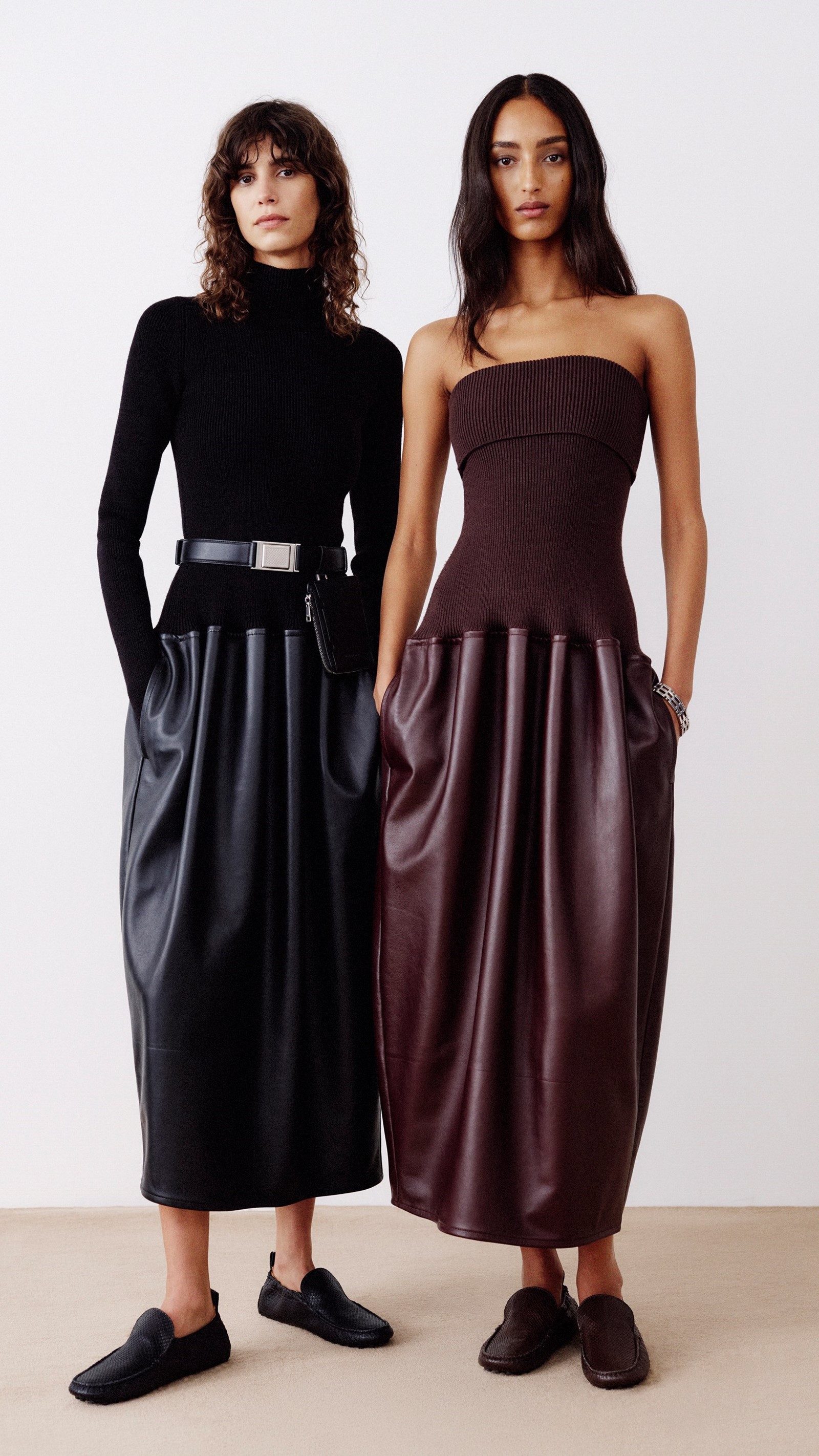
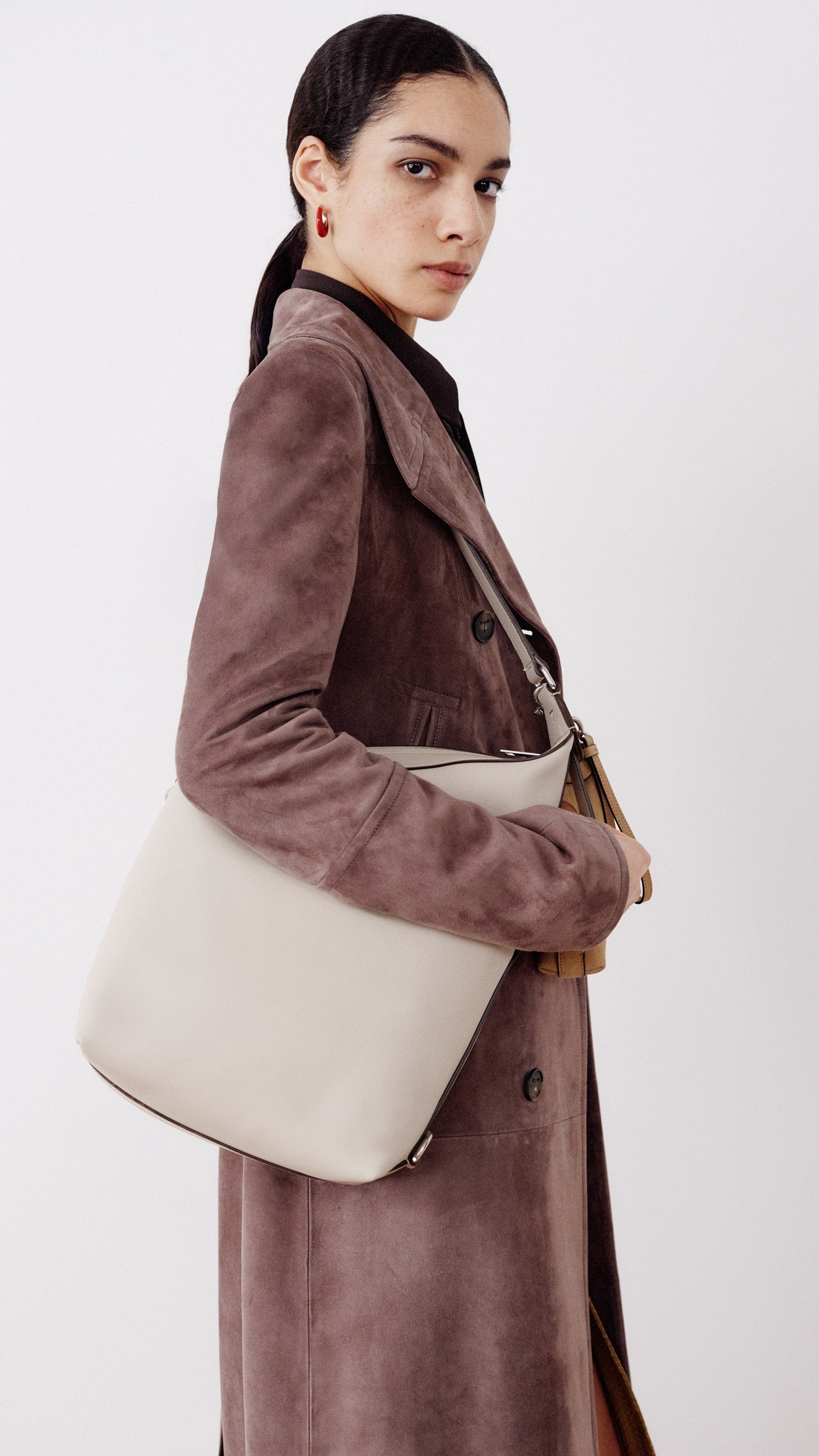
“We’re trying to define what represented Tod’s in the past – and what can represent it in the future,” said Tamburini. “There’s an idea of being rooted in the past, and trying to modernise in a way.” In a sense, his Tod’s is a fact-finding mission, or an artful act of subterfuge and curation – in effect, as with every brand, what you want to do is emphasise the elements you like from the house’s heritage you find appealing, and wilfully ignore the rest.
You could say Tod’s is a blank canvas for a creative director, which keys neatly into another source of influence behind Tamburini’s latest show. It wasn’t just PAC’s history but its contents that also surrendered inspiration: its arty base gave him an excuse to translate the work of some of his favourite artists, namely Carla Accardi, Alberto Burri and Lucio Fontana. All Italian, of course. “We used it as an excuse to build up the storytelling,” Tamburini said. It was also an excuse to experiment with bold colour and texture and, it seems, to push Tod’s beyond just leather, excellent though it is at using the stuff.
“Worked” was the word Tamburini used to describe this collection – tufting and twisting fabrics and knits, and patchworking of leather, suede and ponyskin in single colours to give the impression of textural brushstrokes. Speaking of those aforementioned artists, he commented on “that kind of approach to matter, and how they translated it into a surface full of expressiveness. We tried to translate that to clothes.” Brushed alpaca nodded to swirling forms of Accardi’s works, while the patching of different textures in single colours mimicked Burri’s ‘Plastiche’ canvases covered in scorched, multi-textural but mono-hued PVC – Arte Povera in luxury fashion? Apparently they make good bedfellows.
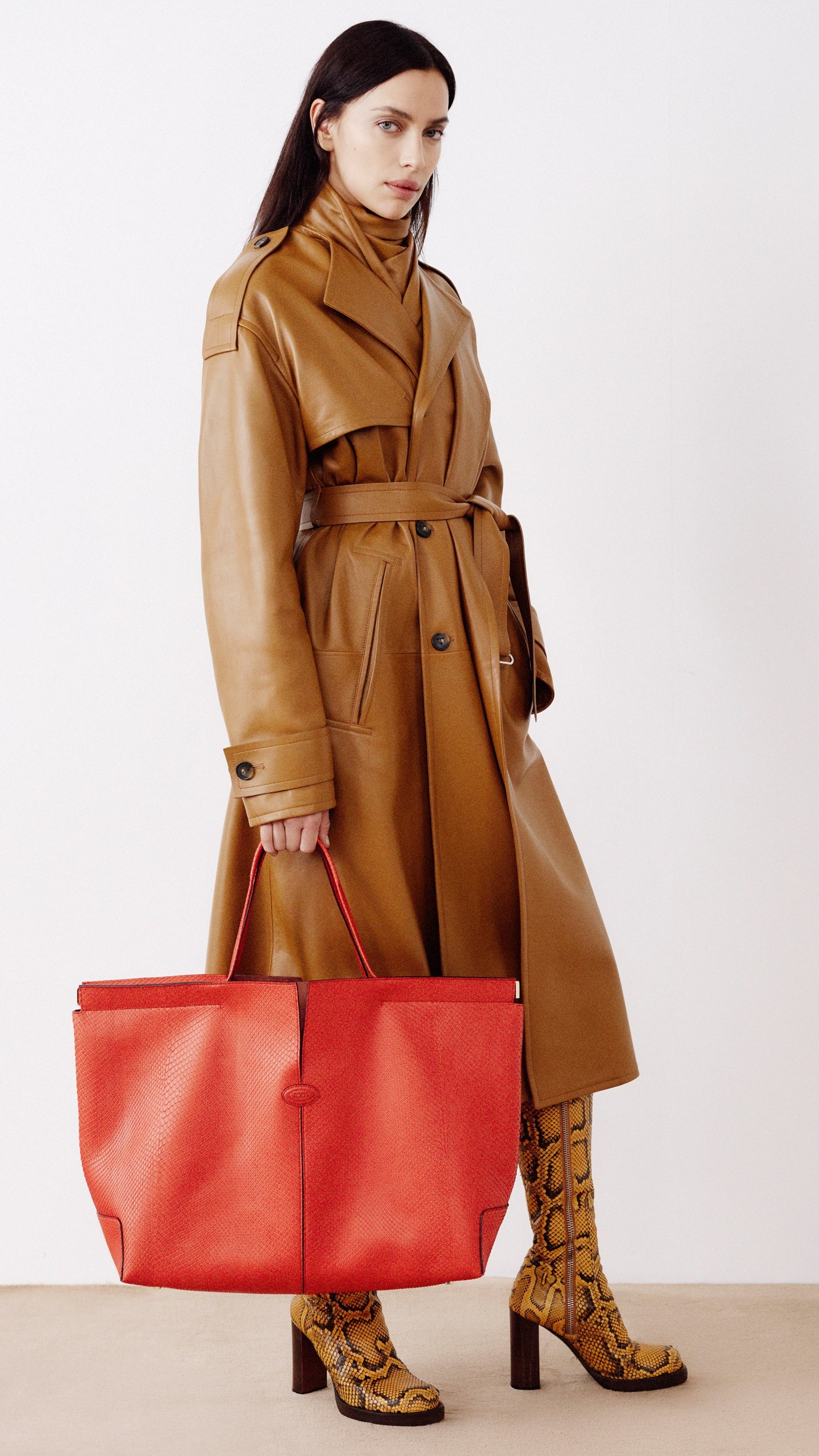
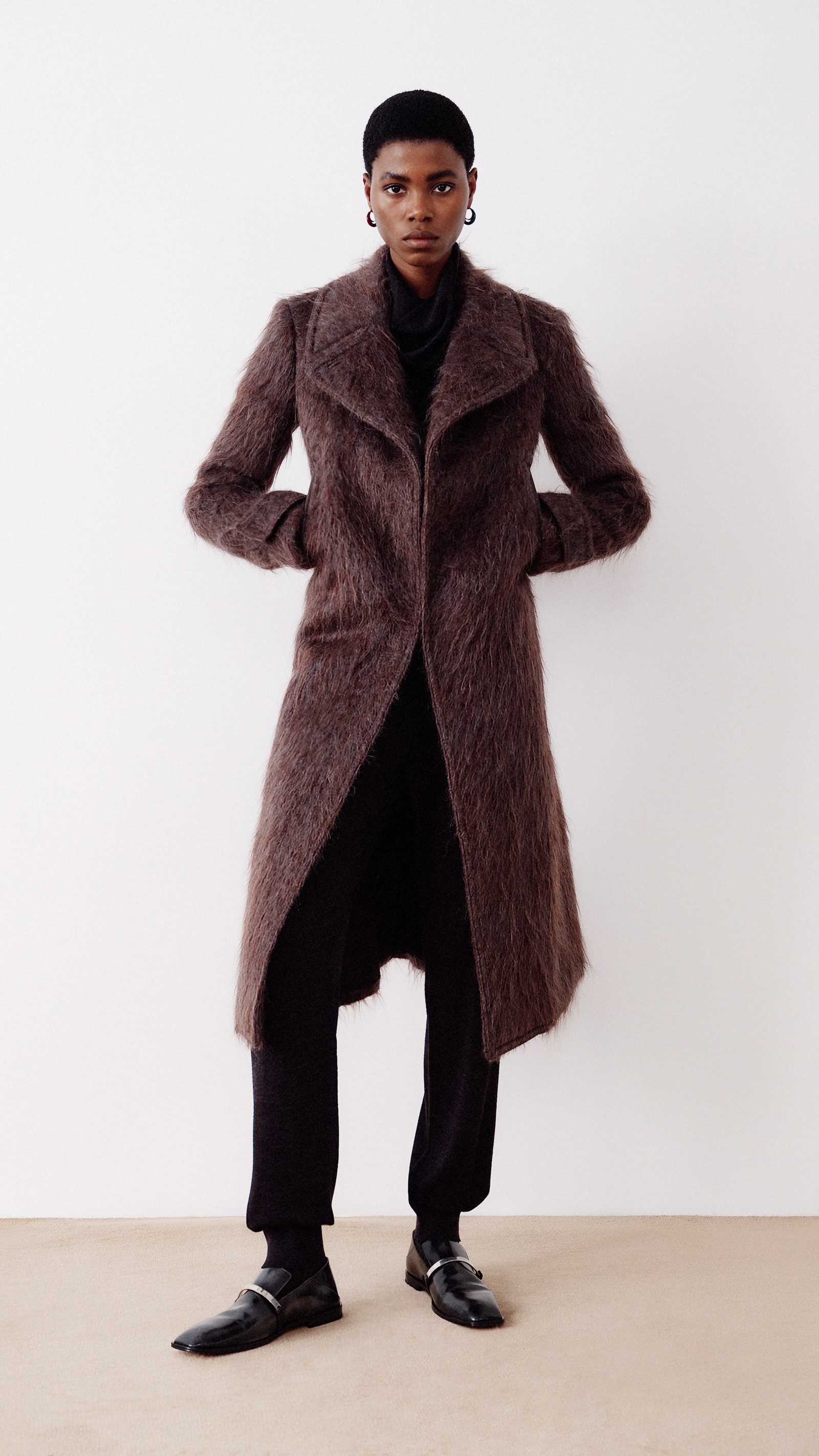
You saw it more generally in painterly tweeds, the edged frayed and – Tamburini confessed – speckled with hairspray to give it three-dimensions. The decisive, slightly off colour palette felt particularly Fontana-y, especially a flat plane of Heinz Tomato Soup red used for a double-breasted coat. Slightly less abstract were hanging pendants of a pristine white hand and slightly ragged golden female torsos that resembled something lopped off a statue, maybe another mafioso. A swirly shearling coat seems to have had squiggles of paint dragged over its surface (actually an intricate intarsia), blobby, fuzzy bags in poset-paint brights looked like splodges of pigment if you squinted your eyes, and rounded, alembic-shaped leather skirts looks like a voluptuous abstract sculptures around the body.
The great thing about this collection was that it could take both broad brushstrokes and pointillist-level precision in looking at Tod’s legacy. “We want to talk about Italy, about being Italian, and what could be a new way to interpret this language,” said Tamburini. “It’s a new way to communicate.”
